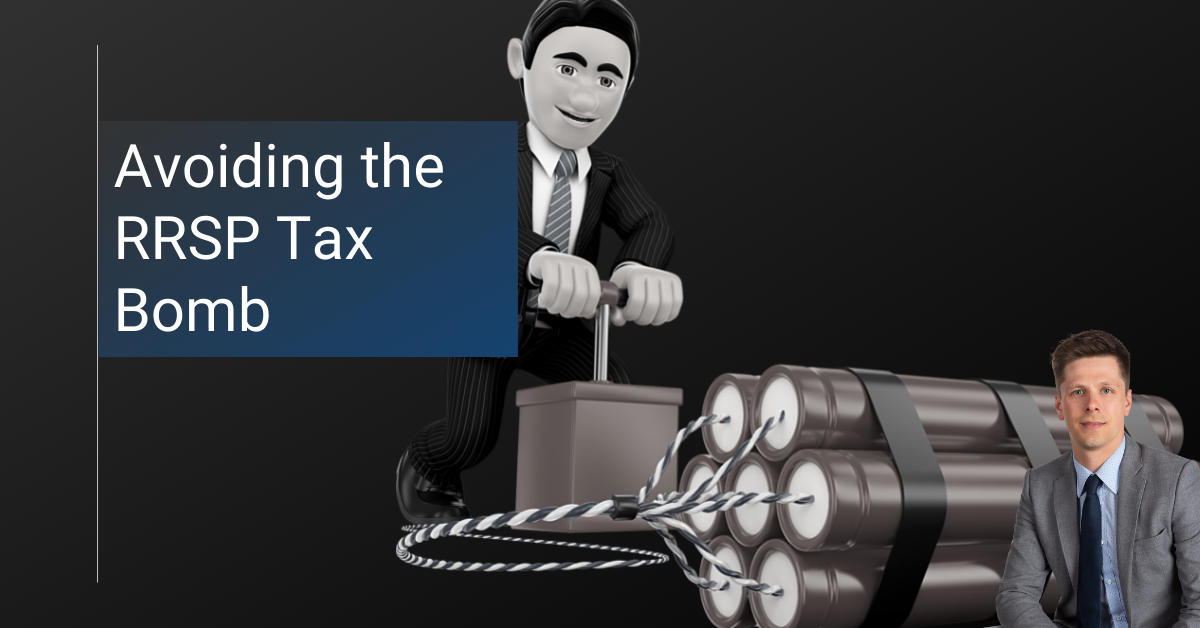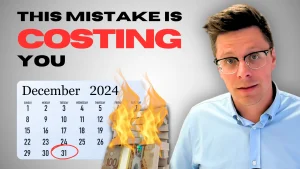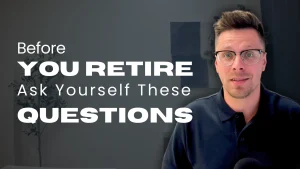[vc_row css=”.vc_custom_1612380408194{padding-top: 20px !important;padding-bottom: 20px !important;}”][vc_column][vc_column_text]
Avoiding the RRSP Tax Bomb
I recently met up with some old friends from high school, and we reminisced about some of the good times we had back in the day.
We got to talking about the time I absolutely bombed during a class presentation. It was a total disaster.
We were allowed to present on the topic of our choice, so my friend and I decided to choose for each other. He thought it would be funny if I made my presentation on the hot dog, and I wasn’t afraid of a challenge, so I accepted. How hard could it be to ramble on for ten minutes about the different condiments you can add to a hot dog.
For whatever reason, I didn’t start preparing for my presentation until the morning that I was due to present. It was a mad dash looking up the history of the hot dog on Wikipedia and putting together a poster to present to the class.
And then I bombed… I had about two minutes of material, so I was left with 8 minutes of open air. One of the worst feelings of my life, but I guess that’s what you get for not preparing.
This brings us to the RRSP Tax Bomb
Many Canadians don’t have a tax-efficient plan to draw down their registered assets, such as the RRSP. By having a plan and being prepared, you can save yourself thousands of dollars in tax. There’s a lot on the line, so it’s best not to wing it like my hot dog presentation.
I’ve talked about the RRSP Tax Bomb in detail in the past, but the gist of it is that you could end up paying over 50% tax on your registered assets upon death. You can significantly improve your financial position by withdrawing funds from your RRSPs when you are in a lower tax bracket.
How much can you save?
A few weeks ago, I sat down with Craig and Janice, a retired couple in their early 60’s. They had built up a good amount of assets but had never done any tax planning with their financial advisor.
Their net worth amounted to $1.2M, of which $650k was in RRSPs. They were in a fortunate position where they didn’t need to rely on their RRSPs to meet their retirement expenses.
Option 1: Do Nothing
Without a plan, their RRSPs would simply continue growing in value as they didn’t require the funds to meet their lifestyle needs. Once they turned 71, their RRSPs would be converted to RRIFs, and they would be forced to start making withdrawals.
Once the withdrawals began, Janice and Craig’s mandated minimum withdrawals from their RRIFs pushed their income above the Old Security Clawback (OAS). Without any planning, they were needlessly losing out on a portion of their OAS for the rest of their lives.
By not drawing down their RRSPs aggressively, Janice and Craig were facing a huge tax bomb of over 50% tax at death.
Option 2: Pay Less Tax Blueprint
Click here for the Pay Less Tax Blueprint
After sitting down with Janice and Craig, we realized they could reap huge savings by going through the Pay Less Tax Blueprint.
By utilizing the Blueprint, it was identified that immediate RRSP withdrawals could significantly improve their tax outlook. Funds were being withdrawn from their RRSPs in a lower tax bracket and redeployed in more tax-advantaged accounts such as their TFSAs and non-registered accounts.
The immediate withdrawals also had the benefit of putting them in a position where their Old Age Security pension would never be clawed back.
Comparison
By implementing this one simple change, Janice and Craig would realize huge savings upon death.
Net Estate Value at Death (after tax)
[/vc_column_text][vc_single_image image=”7803″ img_size=”large” alignment=”center” css=”.vc_custom_1637079049588{padding-bottom: 20px !important;}”][vc_column_text]
Don’t wait until the last minute
The cost of doing nothing compounds quickly as the years go by. The earlier you go through the Pay Less Tax Blueprint, the easier it will be to reap huge tax savings.
You don’t want to be Googling the history of the hotdog on the day your tax bill is due.[/vc_column_text][/vc_column][/vc_row][vc_row][vc_column][/vc_column][/vc_row]







